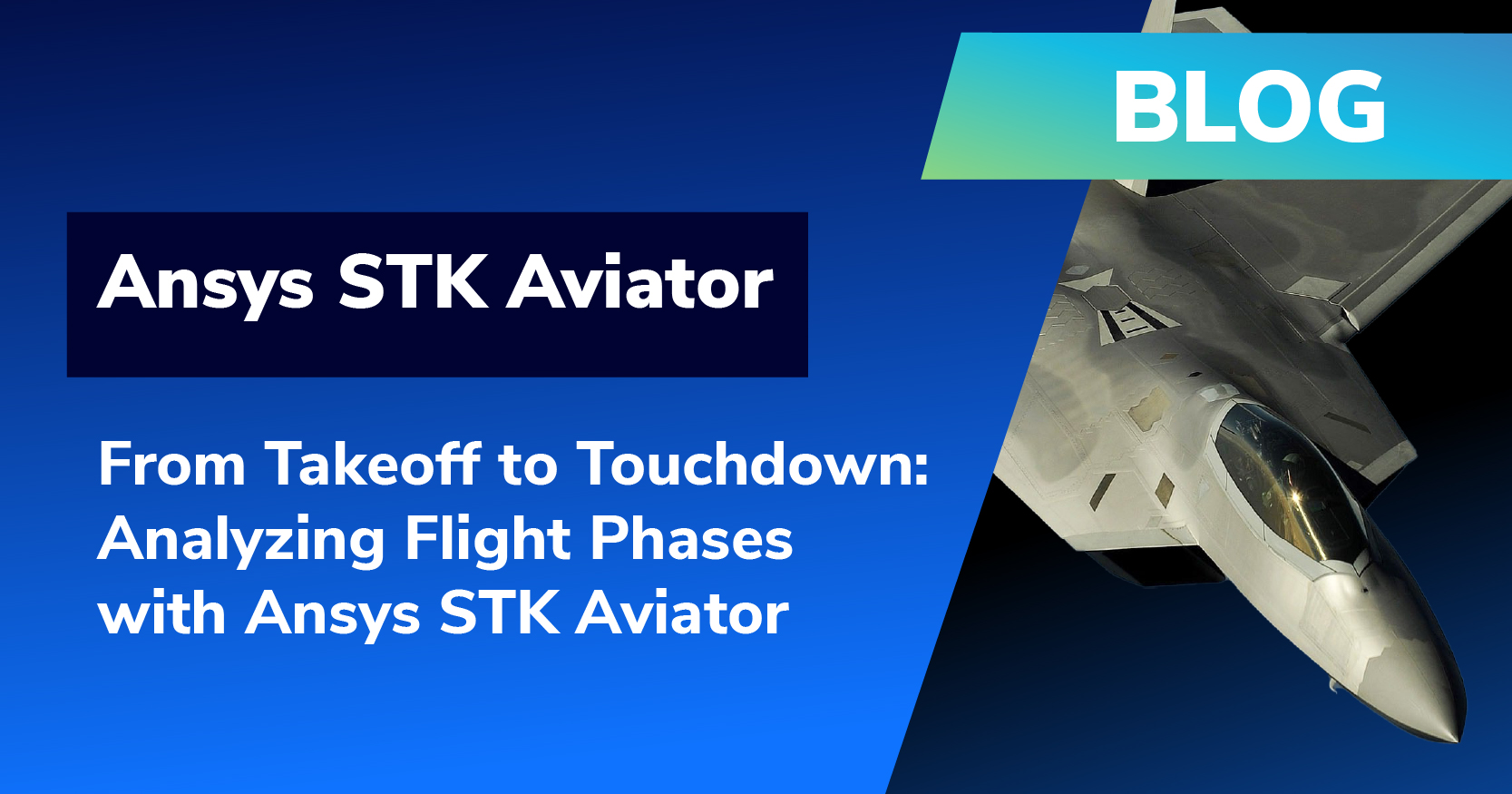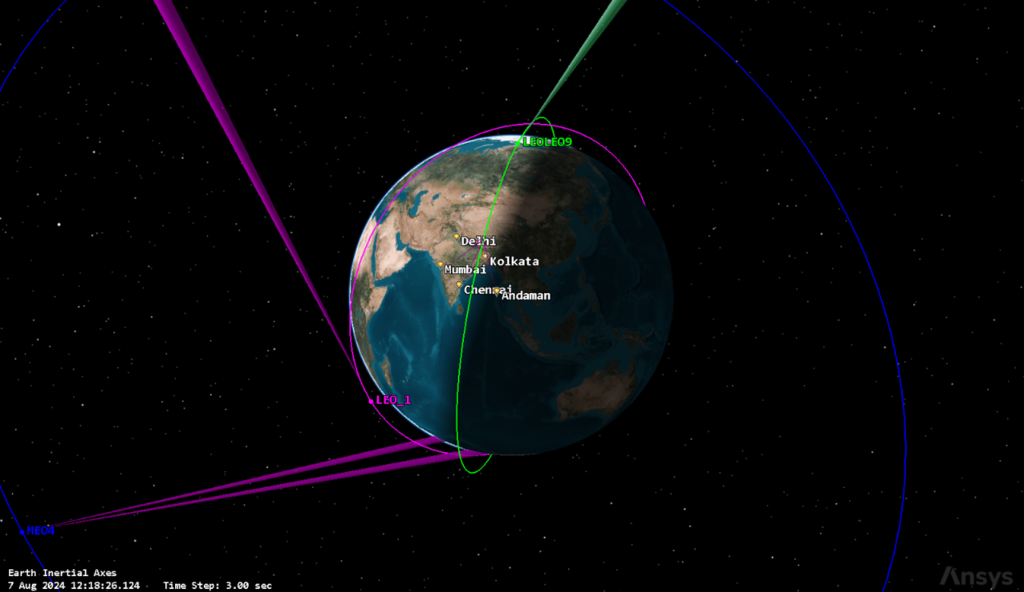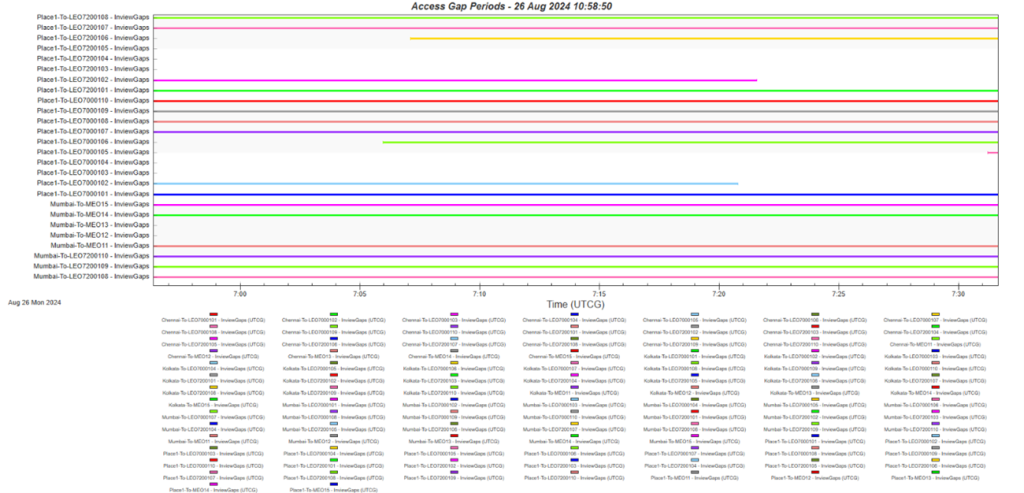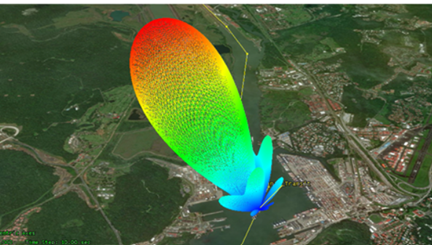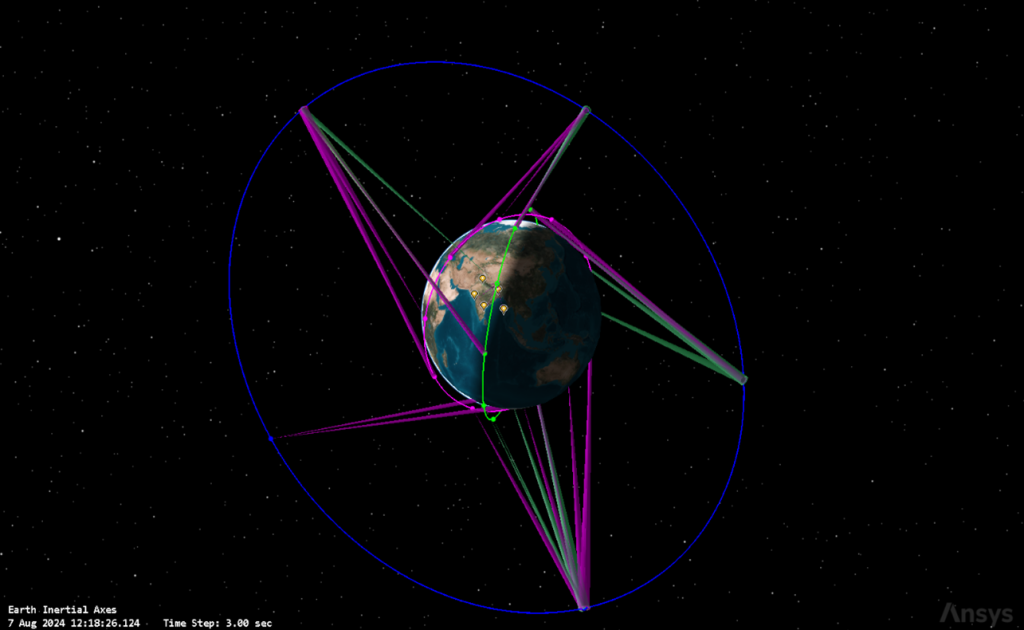As satellite missions grow in complexity, relying solely on a single orbit class is no longer sufficient. Today’s advanced Earth observation architectures blend LEO constellations for high-resolution imaging, MEO satellites for navigation and crosslinking, and GEO satellites for continuous, wide-area communication. This blog explores how Systems Tool Kit (STK) enables designers to simulate not only multi-orbit satellite constellations, but also the end-to-end relay communication architecture that connects these platforms to ground infrastructure.
Combining these orbits creates a resilient and responsive space architecture, but it requires careful simulation and coordination — a task STK is uniquely built for.
Walker constellations are based on a simple design strategy for distributing the satellites in a constellation.
There are two main variants of Walker constellations: Walker Delta constellations and Walker Star constellations. The two variants differ in the distribution of the ascending nodes between the planes of the constellation. For a Walker Delta constellation type, the ascending nodes of the planes are distributed over the full range of 360 degrees, while in the Star configuration, the ascending nodes are distributed over a 180-degree span.
In STK, communication links are modeled using Transmitter, Receiver, and optionally Antenna objects. To establish a link, these components are assigned to space or ground assets (e.g., satellites, ground stations, aircraft). Using the Access tool, users can define when a valid communication opportunity exists based on parameters like line of sight, antenna pointing, and minimum elevation angle. For detailed analysis, STK’s Communications module allows simulation of RF link budgets—factoring in transmit power, gain, path loss, atmospheric attenuation, and system noise.
Chain objects can then be used to analyze multi-hop links (e.g., satellite → relay → ground), helping assess end-to-end connectivity, data latency, and link reliability.
With respect to the relay established, a detailed link budget report of individual path can be taken out for further analysis. It includes key parameters such as EIRP (Effective Isotropic Radiated Power), free-space path loss, atmospheric losses, antenna gains, system noise temperature, received power, and carrier-to-noise ratio (C/N or C/N₀). Users can generate this report between a Transmitter and Receiver (or across Chains) under various environmental and geometric conditions.
The future of space operations lies in integrated, multi-orbit satellite ecosystems. With STK, engineers can design and test complex constellations that span LEO, MEO, and GEO — all while simulating how information flows across the network, from observation to delivery. Whether you’re building a commercial imaging service, a government-backed Earth observation platform, or a hybrid relay network, STK offers the depth and precision needed to move from concept to reality — all within a virtual environment.
